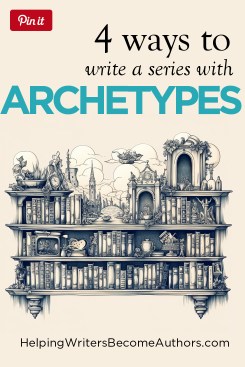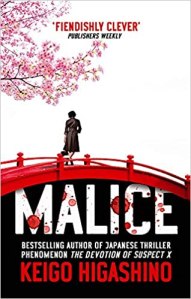 For all writers, there inevitably comes a time when we encounter aspects of the craft that, for one reason or another, we just don’t like. Whether it’s meticulously constructing a setting, creating the intricacies of dialogue, or grappling with a specific writing style, we all encounter elements that trigger a sense of dislike or resistance. The question that often arises is: How can you effectively handle writing the parts you don’t like? It’s a puzzle that demands thoughtful consideration and practical strategies to ensure creative flow remains intact even in the face of elements that might not align with a writer’s personal preferences.
For all writers, there inevitably comes a time when we encounter aspects of the craft that, for one reason or another, we just don’t like. Whether it’s meticulously constructing a setting, creating the intricacies of dialogue, or grappling with a specific writing style, we all encounter elements that trigger a sense of dislike or resistance. The question that often arises is: How can you effectively handle writing the parts you don’t like? It’s a puzzle that demands thoughtful consideration and practical strategies to ensure creative flow remains intact even in the face of elements that might not align with a writer’s personal preferences.
The creative journey is a diverse landscape. Each writer grapples with unique preferences, strengths, and challenges. The key to writing the parts you don’t like lies not only in recognizing these areas of discomfort but also in devising practical approaches to surmount them. Embracing the discomfort as a natural part of the writing process opens the door to growth and improvement. This exploration of the less likable components can then become an opportunity for honing skills, refining one’s craft, and ultimately elevating the entire writing experience.
Today’s post was inspired by a reader’s question. Sionnach asked:
How do you write things you don’t like? For example, I hate setting. Hate it. I skip over it in books I read. I can appreciate when its being done well, but I still find it boring…. I add in just enough setting so that my characters aren’t talking in empty space. One of my beta readers has said she would like a little more scenery. Maybe a little more wouldn’t hurt—except for the fact that I loathe it. I like to hear the characters. They’re the things that interest me. I read your article on setting and am going to try incorporating a bit more in my story, but every writer probably has something they hate. How do you push through it?
Writing a novel is such an incredibly complex and varied artform. It requires so many different aspects writers must learn. We have to learn how to describe settings and people, how to mimic real-life dialogue, how to write character actions, how to share character thoughts, among so many other skills. And then there is the variety of subjects we might need to write about in any given scene—everything from romance to violence to parenting to police procedure to girls’ night out. Really, a writer might be called at any given moment to write about anything within the entire gamut of the human experience.
It’s only natural we won’t resonate or enjoy writing it all. Part of that can come down to the fact that perhaps we haven’t yet developed the necessary skills to write something. Part of it might come down to personal preference. And part of it can even come down to personal triggers and shadows—which can show up every which way, from having trouble staying present with finicky description details to feeling resistance to writing certain subjects.
5 Tips for Writing the Parts You Don’t Like
The parts we don’t like writing will be unique to each of us. Some of us love setting and hate dialogue. The one thing that isn’t unique is the fact that most of us can identify at least one thing we feel like we’re supposed to be writing into our stories and… we really wish we didn’t have to.
Today, let’s break down the experience of resistance so we can discover possible solutions for easing the hard bits and perhaps eliminating some of them altogether.
1. Identify Why You Don’t Like Writing Something
This is always the place to start. Ask yourself, Why? Why don’t you like writing this particular part of your story? Where is your resistance coming from?
If your initial answer is, “Because it’s boring!”—go deeper. Boredom is a mask put forward by deeper motivations and usually signals a different emotion we don’t want to feel. The deeper answers can be vast. At the heaviest end of the scale, maybe there’s something here that’s triggering you or bringing up difficult memories or feelings. At the simplest maybe it’s just difficult to focus your attention when writing this specific part of your story. This could be because your skill in this area isn’t well-developed yet or because you’re trying to write something without the foundation of necessary knowledge (e.g., it’s hard to write descriptive details for a setting you don’t know anything about).
A good exercise when exploring your deeper reasons for experiencing the ick is to compare your feelings about writing a certain part of a story versus your feelings about reading that same element in someone else’s story. For example, you may discover you quite enjoy reading someone else’s love scenes but don’t enjoy writing them yourself. Most likely, however, you’ll find that what you dislike as a reader is also what you dislike as a writer.
Put yourself in your audience’s shoes by exploring your experiences as a reader. Indeed, in my experience, this is the single best way to learn anything about writing and storytelling. Study your own reactions. If you don’t like reading dialogue (and, yes, I have encountered a couple people who don’t), then ask yourself why? If you get bored by lengthy backstories, ask why?
After a little investigation, you may realize you only dislike certain techniques or types of scene when they’re poorly done. When well executed, they may rivet you. If so, examine what makes the difference between one author’s approach and another’s. If you find you have a blanket dislike for this part of the story experience, try to decipher why that might be.
2. Don’t Hesitate to Leave Out the Parts Readers Skip
Try to leave out the parts people tend to skip.–Elmore Leonard
A simple rule is that if you’re bored when you’re writing it, there’s a good chance readers will be bored as well. The good news is this can excuse you from having to write the parts you don’t like. The bad news is that the fact that it bores isn’t always a sign your story will make sense without it.
If you’ve completed the previous exercise of identifying why you dislike something—as a writer, a reader, or both—you can make an educated decision about whether or not that part of the story is worth keeping. When paying strict attention to your own reading habits, notice what you’re skimming or skipping.
Personally, I’m most likely to skip rehashed backstory, unnecessary subplots, and dialogue with extraneous characters who are just there to add color. From that, I can easily deduce the reason I’m skipping is because, as a reader, I don’t care about this stuff. Put another way, this is the stuff that takes me away from what I really do care about—the main characters in the present-day plot taking actions to further the heart of the story. Even a cursory examination tells me the reason I’m skipping is because these elements are poorly presented within their stories. I’m skipping because the inclusion of these elements is just bad writing.
And who knows? Maybe these authors were super bored and made themselves write these scenes when really their stories would have been so much better off without them. (Of course, it’s also possible the authors wrote these scenes with their self-indulgence glasses on, believing readers would love anything they loved writing.)
The point here is that if you’re writing something you wouldn’t enjoy reading then… don’t. Cut the filler. Instead of a couple paragraphs of setting description, hone the skill of identifying one or two “telling details” that can bring the whole thing to life in readers’ imaginations without wasting anyone’s precious time or attention. For all that we like to emphasize the importance of showing over telling, summarization is a crucial writing technique that should be exercised liberally to keep the narrative moving and the pacing tight.
When writing something you dislike, write the least amount you think you can get away with. Then run it by some trusted betas to see how readers might react. Did they feel they were given all the necessary information to understand the story? Did they feel like everything flowed and the pacing worked—and that it wasn’t choppy and didn’t feel like something was missing? If it works for them, that’s a good sign that your resistance might just have been your own good story wisdom telling you didn’t need it.
3. Uncover the Deeper Reason Why the Part You Don’t Like Is Important
When you feel resistance, it’s usually a sign of inner conflict or cognitive dissonance. If you were totally in alignment with not writing something (as per the previous point), then you wouldn’t be worrying about it. You have to ask why a part of you insists this is important to the story. Although you may still decide less is more, it is important to consciously recognize the deeper reasons why something seems like it should be in your story.
Let’s say you’re writing backstory for your protagonist. It’s boring you to death, but you feel like readers need the context. Ask yourself why this backstory is important in the first place. What is its function within the story?
The top layer of this answer might involve the specifics of your story, your character, and the events of that character’s backstory. You might realize that if readers don’t understand something that happened in the backstory, the events of the main story might not make sense.
You can dig even deeper to an understanding of what we might call the “archetypal” function of backstory, which is to create the verisimilitude of cause and effect by providing a reason for the character’s motivation to pursue the plot goal in the main story.
Once you recognize that, you can examine the bit you’re having trouble writing. Does it fulfill that deeper mandate of backstory (or whatever element you’re working with)? In short, is it functional within your storyform? The answer may be, simply, No, it’s not necessary to fulfill the deeper meaning of the technique. But another answer may be, Yes, it is necessary—but it needs to be written with more finesse in order to achieve its full potential.
4. Brush Up on Your Skills
I’ll admit it: I don’t like doing things I’m not good at. I would even generally say that many of the things I’m not good at bore me—which, of course, points to the underlying emotion of discomfort the boredom is covering up. On the flipside, I find a tremendous amount of satisfaction in doing things I am good at. Even if those things are relatively tedious, there is true enjoyment in moving through a task with skill.
Of course, this applies to our writing as well. Sometimes the resistance we feel to writing certain parts of a story may point less to a lack of functionality or importance and more to our own lack of confidence in executing those parts.
Perhaps we need to do more research. We might struggle with writing scenes of our character’s job place and think it’s because we just don’t like those scenes, when really we’re blocked because we don’t know enough about the details of this career to describe or use it as a foundation for interesting characters or conflict.
It could also be we simply need to practice the actual writing skill involved. As stated earlier, writing a story is not just one skill. It is a host of very different skillsets all bundled up together. Just because you’re aces at one skill doesn’t mean you’ll measure up on the others.
Whenever you encounter a part of your story you don’t enjoy writing, consider how you might practice the skill involved—whether it is description, dialogue, showing instead of telling, telling instead of showing, or whatever else. Study how some of your favorite writers execute this technique. Go so far as to copy out passages or mimic their style.
Dig even deeper and ask yourself what they are trying to achieve at an artistic level with this technique. For example, if you’re working with description, you may begin to notice true wordsmiths are rarely “just” describing something at length. Rather, they may be intentionally using description to achieve other ends—everything from evoking symbolism and mood to furthering the plot or providing commentary on a character.
You aren’t just seeking to become good at a specific technique, you’re seeking to master it—to understand its deeper purposes and uses, so you can employ it in your story with all the skill of a general positioning battalions.
5. Gamify It
Finally, there comes the unfortunate truth that not all of writing is fun all the time. After you’ve explored the above possibilities for either eliminating the parts you don’t like or evolving them into parts you do like, you may be faced with the realization that you have to write the tough stuff anyway.
From there, the only thing you can do is come up with a game plan that will mitigate your resistance as much as possible. Get real with yourself about how this part of your writing is affecting you. Do you feel so much resistance that you end up avoiding that scene—or your entire story—altogether? Do an honesty check and evaluate whether you would be most productive forcing yourself to power through these scenes, or whether you’d be better off leaving yourself a note along the lines of “[WRITE DESCRIPTION HERE]” and then putting off all the hard stuff to the end. (Some of the thoughts in this post talking about the pros and cons of editing as you go are pertinent.)
Whenever the time comes to write the hard stuff, do everything you can to set yourself up for success.
1. Seek Inspiration
You might start by psyching yourself up a bit and getting in the right mindset. Seek whatever inspiration would be most helpful. This might be reading similar passages by authors you admire. It might be brushing up on necessary research, so you have all the information you need fresh in your mind. Or it might be browsing related images or music videos to put you in the mood.
2. Set a Timer
Set a timer for an amount of time slightly shorter than what you think will be necessary to write this section, up to fifteen minutes. Then write like the wind! If you haven’t finished after the first fifteen minutes, set the timer again and keep going. Writing in short bursts can make the obstacle seem smaller. After all, you can definitely write something you don’t like for just fifteen minutes. Don’t overthink while writing. Leave the editing for later.
3. Bribe Yourself
Finally, a well-timed bribe can go a long way toward grounding you and helping you move through grinding resistance. If I’m writing something particularly difficult, I will sometimes provide myself with something to eat that comes in tiny pieces, like craisins or chocolate chips. Even just having a cup of coffee to sip can do the trick. Then I will “bribe” myself with the rule that I get to take one bite or one drink after every paragraph or section I complete. Not only does this give my brain forward-thinking momentum, it also helps contain the impulse toward other distractions.
***
The ability to navigate and conquer the parts you don’t like writing is a sure sign of resilience and growth. When you embrace the multifaceted nature of the creative process, you have the opportunity to reach toward greater and greater mastery. Even though not every part of the writing experience will resonate equally, you can utilize your own wisdom about your process, as well as these practical strategies, to transform resistance into productivity. The path won’t be without challenges, but each conquered obstacle is an opportunity add a new layer to your expertise and artistry.
Wordplayers, tell me your opinions! What are some of the parts you don’t like writing? Tell me in the comments!
Click the “Play” button to Listen to Audio Version (or subscribe to the Helping Writers Become Authors podcast in Apple Podcast, Amazon Music, or Spotify).
___
Love Helping Writers Become Authors? You can now become a patron. (Huge thanks to those of you who are already part of my Patreon family!)







